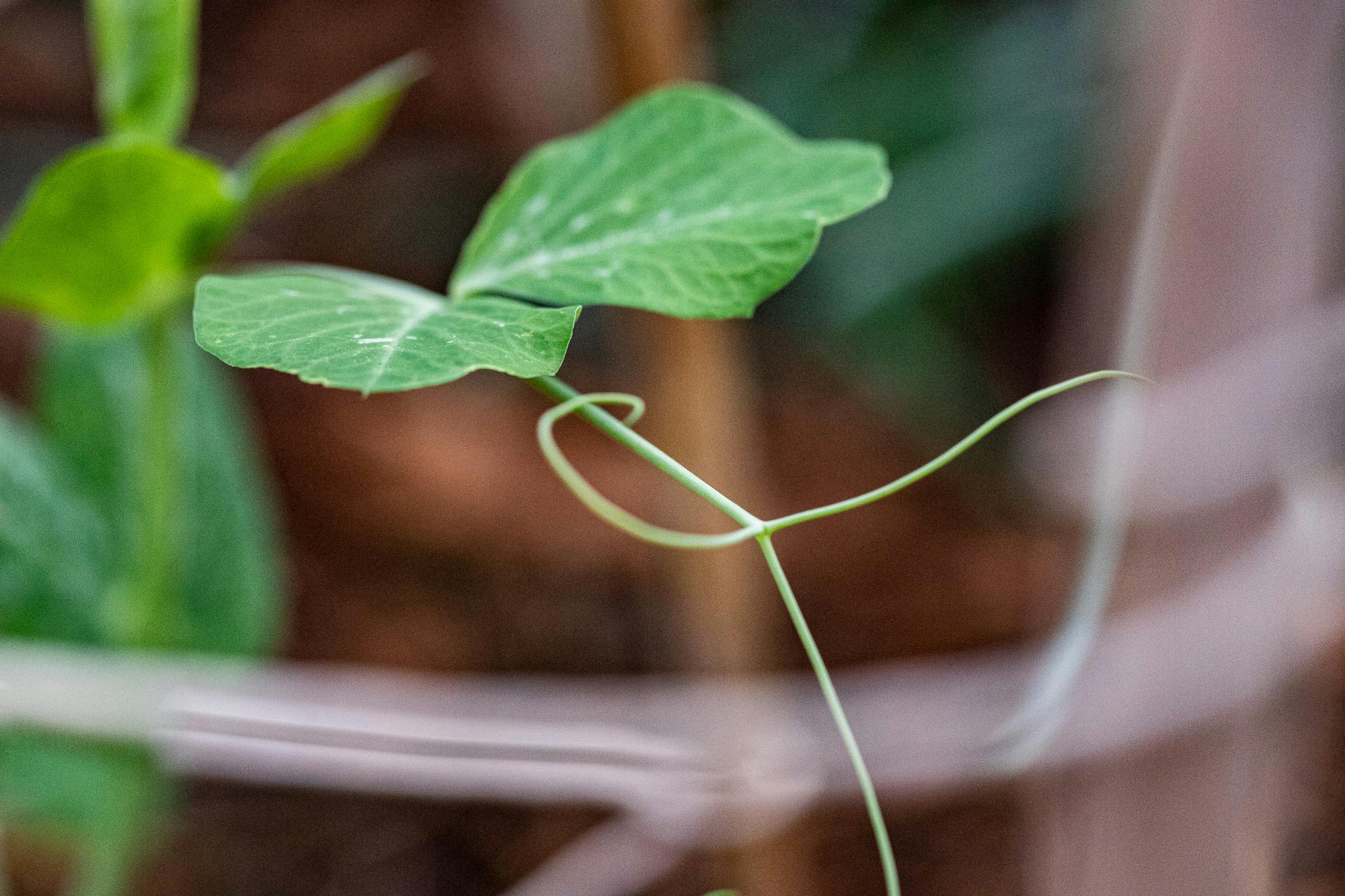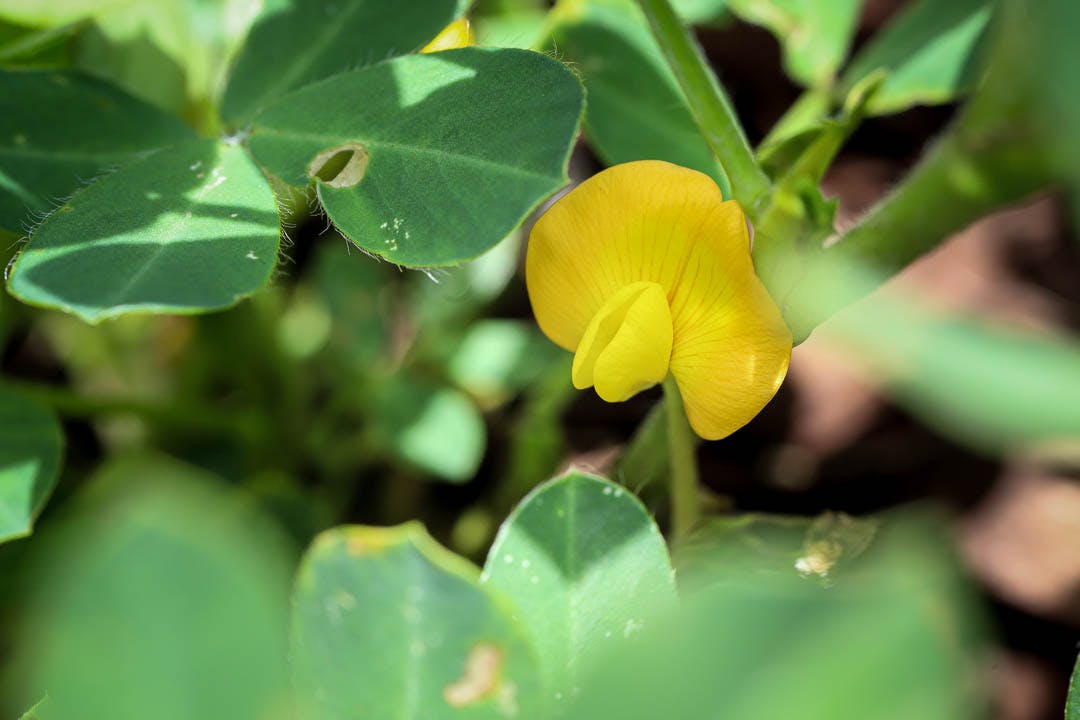Everything to know about the amazing nitrogen-fixing Fabaceae family.
Years ago, my wife and I wrote a post on Indiaphile called “A Guide to Indian Dal, Lentils and Pulses.” It has been one of our most successful posts of all time and found its way into articles of the likes of the Guardian and NPR. When I became interested in gardening, it brought a whole new perspective to the topic.
The Indiaphile post was all about the food value of this amazing crop and limited to the significant role it plays in Indian cuisine. The family of plants is so much more interesting than that post could even begin to explain.
Members of the Fabaceae family have one very obvious thing in common; the dead giveaway is the seed pod. Think “peas in a pod” or peanuts. There is one other important characteristic that is less apparent: they are nitrogen-fixing.
Fabaceae is a large family of plants with diverse species throughout the globe. Some are vining, some are herbaceous, and some are trees.
Nitrogen Fixing
Nitrogen is one of the most essential elements for life. Proteins cannot be created without nitrogen. Lucky for the living, it is the most abundant element on Earth. Unlucky for the living, most of it is found in the air and we are not able to absorb it in our breath or any similar means. We have to get it from our food. Plants get it the same way they get other nutrients, through their roots.
There are bacteria that are able to absorb nitrogen from the air. These bacteria are called rhizobia and live in nodules on the roots of a host plant. They collect nitrogen from the atmosphere and feed it to the plant. Most host plants for rhizobia are in the legume family, although a few are not. (The rose family has several, such as California’s Mountain Mohagany and the California Wild Rose). And there are some legumes that are not nitrogen-fixing, such as the Styphnolobium genera (ie the Coralbean Shrub from Texas, Pagoda Tree from China).
Exceptions are few and far between, and the legume family is the family of nitrogen fixation. This property makes them valuable as part of a crop rotation schedule. Crops, such as corn, may deplete the soil of nitrogen. So between other crops, a field may be filled with alfalfa or clover. These crops are sometimes called “green manure” since they provide nitrogen the way animal manure might.
As a gardener, you may grow beans or peas in your vegetable beds to help restore the nitrogen balance. An important thing to note, this process results in almost all of the nitrogen ending up in the plant, not the soil. In order for the next crop to benefit, the plants will have to be allowed to decompose in place.
Should I Innocculate my Legumes with Rhizobia?
Also worth noting is that the plants do not require the bacteria to survive, and if growing from seed, they do not come with it in tow. That means for your new pea plant to benefit from rhizobia, and to benefit your garden bed, it will have to be colonized by rhizobia.
You can let this happen naturally, which may take some time, or you can purchase inoculant from a garden store. It is not very expensive. The common recommendation is to innoculate if you have not grown legumes in a location within the last 3-5 years.
If you have grown legumes more recently than that, you can expect the presence of enough bacteria to colonize your legumes without having to inoculate them.
California Native Plants in the Fabaceae Family
There are a lot of native plants in California in the Fabaceae family.
Western Redbud (Cercis occidentalis)
The Redbud is a familiar ornamental plant, however the Western Redbud is usually only found in native plant nurseries. It’s a real shame because it is just as easy to grow as its cousin the Eastern Redbud. In California, it is naturally found in the foothills and mountains, especially in the Sierras. It has some natural range in Southern California, but due to our dry weather, it tends to be found only near streams and creeks. As a landscape plant, it will require more irrigation than other natives.
It has a similar appearance to other Redbuds, winter deciduous and exploding with color in the spring. It is a fast growing, short-lived tree that maxes out at about 20 feed tall.
Screwbean Mesquite and Honey Mesquite
These are both dry-loving trees. The screwbean mesquite is so named because its legumous seed pods twist in on themselves. This is thought to be an adaptation to protect the seeds from weevils. Honey mesquite is a similar tree that produces a tap root that can reach as far down as 100 feet in pursuit of water. It produces an edible fruit that is very sweet, giving it the name “Honey mesquite.”
Fairyduster (Calliandra eriophylla)
A beautiful desert plant, found mainly in the Anzo-Barego desert and the desert east of the Salton Sea. This picture shows one seen at the Manhattan Beach Botanical Garden, a native demonstration garden.
Lupines
Lupines are important wildflowers, often found in meadows. California has about 100 varieties of them, from Arroyo Lupine to “Grape Soda Lupine.” Some of them are commonly found in wildflower packets even at big box retailers. Lupin seeds can be edible, but care should be taken as they can also be highly toxic. Also, anyone with a peanut allergy is also likely to be allergic to lupines.
Clover
Clover make for a nice groundcover and are fodder for livestock. There are many species of clover found throughout California. Some native plant nurseries offer seed mixtures of clover.
Palo Verde
Palo verde are neat trees, gaining popularity as street trees in Southern California. They are instantly recognizable by their distinctive green bark. The bark is that color because, just like its leaves, it performs photosynthesis. Palo Verde are native to dry desert areas of California and are able to live off of very little water.
Other Important Legumes
The legume family is quite extensive and so important in agriculture.
Alfalfa (Medicago sativa)
Alfalfa is a very useful farming crop, used for livestock feed, livestock grazing, poultry bedding, as a green manure and as an insectory. As a legume, because of its nitrogen fixing properties, it has a high protein content, which is what makes it a great feed for livestock. It is called an “insectory” because insects love to inhabit it. It makes a nice home for predatory insects. When it is harvested, rows are skipped to maintain the population of predatory insects in a field.
An odd fact about alfalfa is that only young bees can reliably pollinate them. The flowers are shaped in such a way that when the bees go for the nectar in their natural way, the pollen carrying keel smacks them in the head. This forces them to carry the pollen, but it also annoys the bees and they quickly learn how to extract the nectar without extracting the pollen.This means experienced bees do not pollinate alfalfa.
Rooibos (Aspalathus linearis)
Rooibos is a small plant with needle-like leaves. It is endemic to a small region in South Africa. Rooibos is used to make an earthy tea, prepared in a way very similar to black tea. It has gained some international marketability since around 2000.
Broom
“Broom” is a common name that covers many genera. Many species of broom have significance. One is the “Common Broom” or “Scotch Broom,” Cytisus scoparius. Scotch broom was introduced in the 19th century as an ornamental plant and is an invasive species in California, as are French broom (Genista monspessulana), Mediterranean broom (Genista linifolia) and Spanish broom (Spartium junceum). They are aggressive seeders which allow them to crowd out native species. During the dry months, they become significant fuel for wildfires. “Dyer’s broom,” Genista tinctoria, has been used as a yellow dye.
Peas, Beans, Papadi, Lentils
When you start listing lentils and beans, you really start to see the significance of the legume family. Kidney beans, black beans, garbanzo beans, soy beans, adzuki beans, split peas, and so on. Beans play a significant, sometimes defining role in many different cuisines. Beans can grow on bushes, vines or trees, depending on the species.
Peanuts
Peanuts are fascinating to me because of the way they are formed. Pea plants have the familiar little paddle-like leaves common in the legume family. And the yellow flowers also share the look. When the flower is pollinated, it drops down and forms a filament. The peanut pods form in at the end of this filament, underground. That is why the peanut is also known as a “ground nut,” but it is no nut at all.
Trees
There are many trees in the Fabaceae family: Acacia, Redbud, Carob. Carob is a common substitute for chocolate, made popular in the 1970s by the health food industry. It lacks and fat and sugar of chocolate.
Indigo
Indigo is an important plant in the history of clothing dye and paint pigment. The classic dyer’s indigo is Indigofera tinctoria, but there are other related plants in the same genera, or in other genera and referred to as “false-indigo.” The green leaves have to go through a fermentation process in order to turn to an indigo or blue color.
Conclusion
Rare is the gardener that will not at some point plant a member of the Fabaceae family in their yard. Whether it be an ornamental Redbud tree, butterfly pea or indigo plant. Many vegetable growers find themselves interested in growing beans, prizing them for their high protein content. It's hard to grasp how much value this amazing plant family has provided to the other plants and animals, as well as humans, for many millenia.











